|
Union Mill
In the late 18th
century the yield from grain crops was extremely
variable. In some years there were excellent
harvests, but during the last decade of the century,
and in the early years of the following century,
things went from bad to worse due to a run of successive bad harvests. The problem was not
confined to the UK, it also occurred in much of
northern Europe.
Bread was an important part of
the staple diet. The shortage of grain, and the
subsequent tripling of its price between 1790 and
1800, led to a great shortage of bread, particularly
for the poorer classes. Some towns opened a
subscription to provide bread for the poor, to which
the wealthier members of society could contribute.
There were many riots
throughout the country caused by the high price of
corn. From the 11th to the 15th of September, 1800,
people rioted at Walsall, and Wolverhampton. They
were brought under control thanks to the assistance
of the Walsall Volunteer Force.
Flour clubs (a type of
co-operative retailing scheme) were set up by a
number of friendly societies, and associations of
working men were formed to purchase wheat and get it
ground at an affordable price for members, who paid
a suitable subscription. In order to reduce costs to
the minimum, some of the larger societies began to
rent, or even build mills of their own.
As grain shortages increased,
consumer co-operative production schemes began, in
which share capital was raised, to fund the building
of a corn mill, to produce corn on a large scale at
an economical price. Projects were often augmented
with donations from local benefactors. They were
known as ‘Union Mill Societies’ who initially used
windmills, which soon proved to be inadequate
for large scale production.
By this time a steam-powered
flour mill had become a practicality. In the 1780s Boulton and Watt
had set up a successful, experimental, steam-powered
corn mill at Soho, to prove the technology. as a
result a number of steam-powered mills soon
followed. The first was the Union Mill operated
by the Birmingham Bread and Flour Company from 1796.
Other cooperative mill societies were set up at
Brentford, Hereford, Hull, Nottingham, Sheffield,
Whitby, and Wolverhampton.
Union Mill, Wolverhampton |
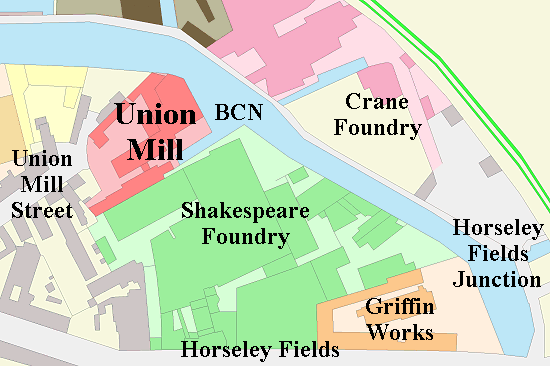
The location of Union Mill.
|
The successful venture in
Birmingham led to the formation of the Wolverhampton
Flour and Bread Company, and the building of Union
Mill. It all began on Friday 28th August,
1812 when the promoters offered £1 shares to the
public, in the hope of raising £10,000 in capital,
later increased to £15,000.
A committee was formed by
Richard Fryer, a banker, who would later become one
of Wolverhampton's first two M.Ps. Fryer was the
committee's first chairman, until Benjamin Mander
took over after the first few
months.
| The committee was as follows: |
| Benjamin Mander |
Japanner |
| Joseph Baker |
Screw Maker |
| Mr. T. Timmins |
Coal Master |
| Mr. J. Moreton |
Auctioneer |
| Mr. J. Felton |
Tax Collector |
| Mr. Ryley |
Printer |
| Mr. R. Gough |
Grocer |
| Mr. T. Savage |
Gentleman |
| William Clarke |
Gentleman |
|

The Union Mill.
|
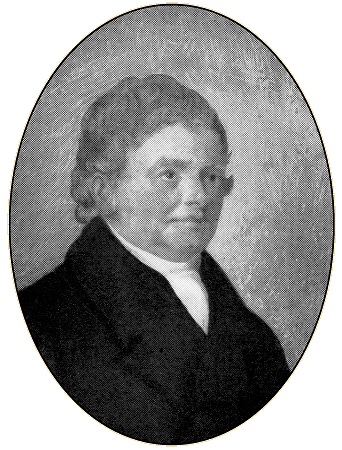
Benjamin Mander
1752 - 1819 |
Provision was made for shares
to be purchased in instalments, and upper limits
were set for the number of shares that could be held
by any one person.
In Wolverhampton a single
share could be purchased with instalments of 2
shillings and sixpence a month, and an individual
could purchase a maximum of 20 shares. By 1813 this
had been raised to 40 shares.
Building a steam mill was an
expensive undertaking, requiring a large amount of
share capital. After six months a total of £9,273
had been raised. The Union Mill buildings cost
£6,673, leaving a balance of £2,600.
The
steam-powered mill had 5 pairs of stones, four of
which would be used for milling the flour, while the
fifth was being dressed. There were also 8 ovens for
baking bread. |
| Flour production began early in
1813, and bread production started before the year
was out. To begin with only three of the ovens were
used. Around 500 bushels of flour, and 770 quartern
loaves were produced each week. Around 50 shops in
the area were supplied with flour or bread for the
shareholders, who were permitted to re-sell it at a
profit. The system worked well. Flour was sold at
cost to the shareholders, at a much lower price than
was available to the general public. Subscribers
were allowed a discount of 4 pence per bushel of
flour, and 6 pence for every 20 quartern loaves. |
| Loaves were sold to the public at 9½ pence each,
2 pence less than the price charged by other local
bakers. Established bakers and millers were
hostile to the scheme, which they saw as a serious
threat to their business.
One baker stated that “There is no profit now got
by the sale of flour or bread, the mill company sell
it at such a low price”. |
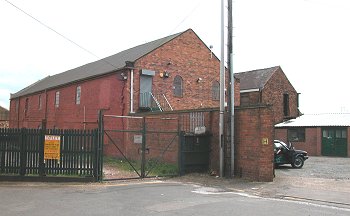
The two surviving Union Mill buildings at the far
end of Union Mill Street.. |

The site of Union Mill, as seen today.
|
As a result the bakers and millers
got together and brought a Bill of Indictment
against Benjamin Mander and the committee, who were
charged with illegal combination, stating that they
were annoyed by “a scheme which was held out as a
probable way to reduce the price of provisions, and
be of great public benefit”.
The case went to trial at
Stafford Assizes in the summer of 1814 before Sir
Robert Dallas, and a special jury. A rumour spread
that if found guilty Benjamin Mander would hang, and
the members of the committee would be transported
for 7 years. The trial took 14 hours to complete,
and resulted in a not guilty verdict.
|
|
When the news
reached Wolverhampton, church bells rang, and
celebrations were held.
As the coach carrying the
witnesses was drawn through Wolverhampton in
triumph, crowds assembled and shouted “Justice and
Union for ever”.
This was followed by a dinner at
the Swan Hotel.
In Pigot & Company's
Staffordshire Directory of 1842, Savage, Parkes &
Shaw, bakers and flour dealers are listed as the
occupiers of Union Mill.
In White's 1851 Staffordshire
Directory, Union Mill as listed as being occupied by
the Union Mill Flour & Bread Company. The manager
was Edward Hathaway. |
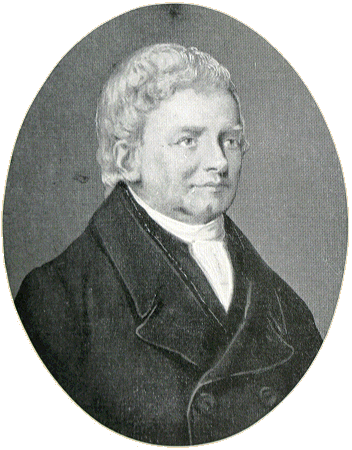
Benjamin Mander. |
|
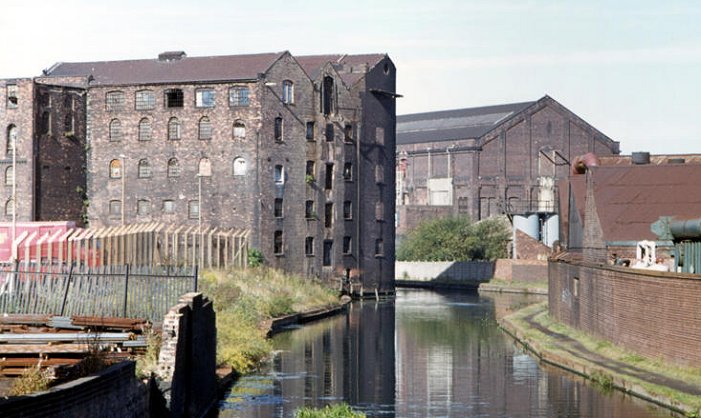
Union Mill, photographed
by Dave Necklen. |
Until at least the First World
War, the mill was operated by the Union Mill
Company. Part of the building fell into a bad state
of repair and so the old mill was purchased by
Wolverhampton Council in October 1986 for £110.000.
It had previously been divided into several units,
from where the following businesses operated:
Barclays Business Supplies, Kite
Fitted Bedrooms, T.D Motors, Fraser Cleaning, and
The Sandwich Box. |
|
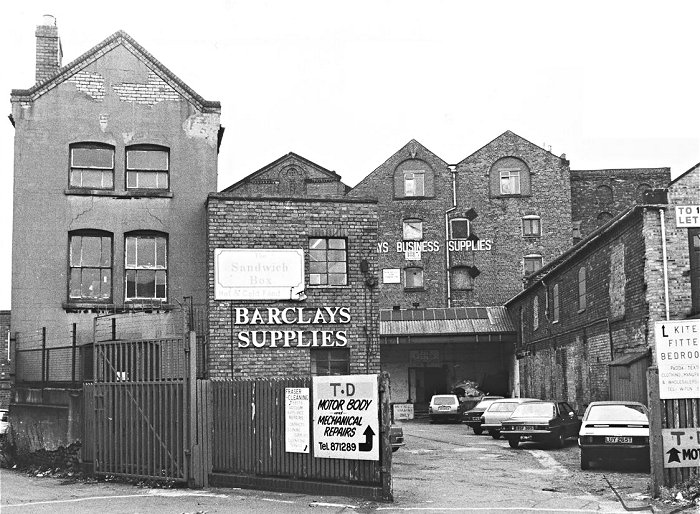
The rear of the mill
buildings in 1986. |
|
In March 1988 the local
authority decided to demolish the building at a cost
of £50,000 and to clear the site, because it would
have cost around £1.2m to convert the building into
high quality workshops. This was seen as too high a
cost.
The building's fate was sealed
after a fire in July 1989, which destroyed most of
the top floor. Demolition work was soon underway. By
the 4th August 1989, much of the building had been
demolished.
Two of the rear mill buildings
still survive, and can be seen at the end of Union
Mill Street. |
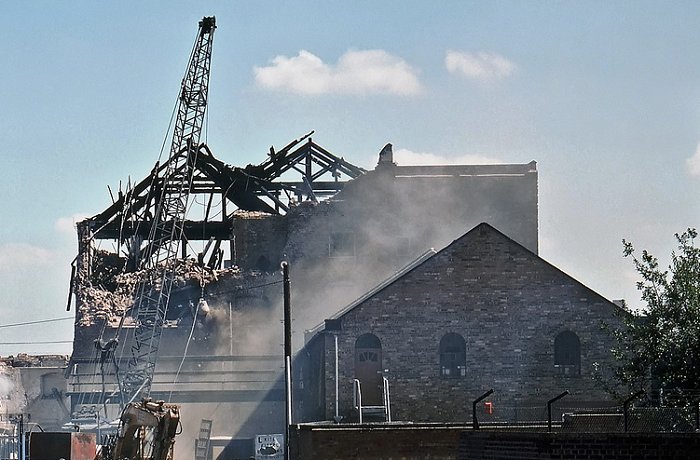
Demolition of the mill.
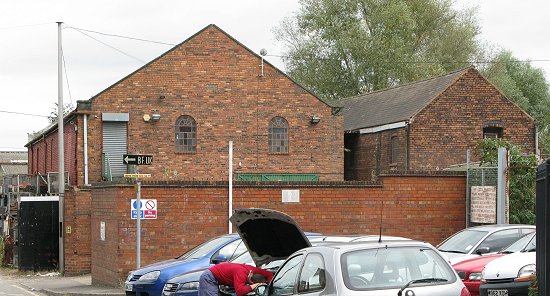
Another view of the two surviving buildings.
|
References
Varnished Leaves. Charles
Nicholas Mander. 2005. The Owlpen Press.
History of Wolverhampton.
Gerald Mander & Norman W. Tilesley. 1960.
Wolverhampton C.B. Corporation.
The History of Mander Brothers.
1955. Private Publication.
The Wolverhampton Flour and
Bread Company. Peter Hickman. 1998. The
Blackcountryman, vol.31 no.3. |
 |
Return to the
previous page |
|